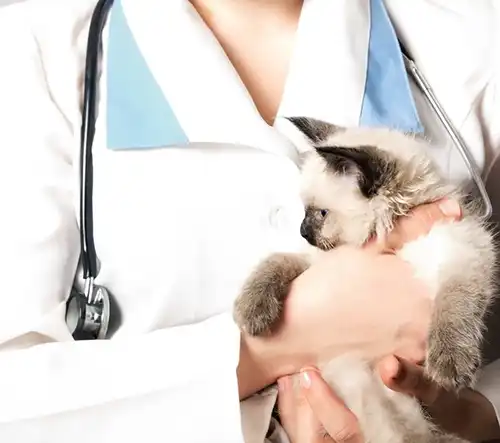Have you thought about welcoming a furry friend into your home? If that’s the case, you might want to think about adopting a rescue. Many of our patients are rescues who have faced difficult circumstances in the past, but are now thriving as cherished pets. This article delves into the topic of rescue dogs, offering insights from a local Marin County, CA vet.
What Are The Advantages of Adopting a Rescue Dog?
We are always delighted to witness rescue dogs finding loving homes. Many believe their rescue dogs are the best pets they’ve ever had. I understand the reasoning behind that. Fido can certainly recognize and value someone who is looking after him and treating him with kindness. Rescue dogs are known for their unwavering loyalty and affectionate nature. You have the opportunity to choose your ideal puppy! Rescue dogs of all shapes, sizes, colors, breeds, ages, and activity levels are readily available. Rescue pups are typically affordable to adopt and often come already fixed and trained. Additionally, you may discover that your heart simply melts when Fido gazes at you or wags his tail in your direction.
What Does the 3/3/3 Rule Entail for Dog Adoptions?
This is more of a guideline rather than a strict rule. This serves as a gentle reminder that our beloved canine companions may require some time to adapt to significant changes, such as transitioning to a new home. Even if Fido is going to a fantastic and caring forever home (which we believe all dogs deserve), it will still take some time for him to adapt.
According to the rule, your new pup will need approximately three days to adjust to his new surroundings, three weeks to fully settle in, and three months to truly feel secure and cherished.
How Do I Apply The 3/3/3 Rule?
The 3-3-3 rule serves as a helpful guideline for smoothly transitioning a rescue dog into its new home and aiding in its adjustment. The recommendation is to allocate the initial three days for acclimating to the new environment, the subsequent three weeks for instruction and building connections, and the first three months for ongoing socialization and training.
Let’s break it down a bit better:
First Three Days
Right now, your main priority is ensuring Fido’s sense of security, and making sure he has a comfortable and tranquil space to unwind and relax. It is generally important to exercise moderation when it comes to treats. However, now is an excellent opportunity to provide some delicious snacks. Opt for smaller portions, though, to avoid overfeeding your furry friend. Instead of trying to grab Fido’s attention, simply communicate with him in a warm and welcoming manner. If your canine pal enjoys being petted, feel free to give him some attention, but if he’s a bit reserved, just give him space.
Do not be surprised if your furry friend spends a lot of time sleeping at first, especially if he has come from a shelter. Dogs often find the shelter environment to be very scary and stressful. Your pet might just need a little extra rest while he decompresses a bit.
When your pet makes a mistake, like creating a mess, it’s important not to resort to punishment. Verbal reprimands should suffice, as anything more could potentially frighten him. Positive reinforcement is the way to go.
First Three Weeks
After your pet has settled into his new environment, focus on building a strong bond and addressing any necessary training. You’ll need to establish a consistent routine in this context. Make sure to take Fido for daily walks and set aside some time to play with him. It is advisable to establish a consistent daily routine for these tasks. This will provide him with a sense of security.
When taking your dog for a walk, use a strong and reliable leash. Fido may have unknown phobias or quirks, like an intense fascination with squirrels or a fear of other dogs. Keeping a firm hold on him can help you circumvent any sudden attempts to escape.
Prioritize your pooch’s health! We recommend scheduling an appointment with a veterinarian as soon as possible. Although he may have already been fixed and is up to date on vaccinations, it is important to give him a comprehensive nose-to-tail examination. Now is an excellent opportunity to receive tailored guidance regarding his care requirements.
Fido might challenge you a little bit during this stage. If you encounter any speed bumps or behavioral issues, it would be wise to seek guidance from your veterinarian.
You might want to consider getting a doggy DNA test done, particularly if your furry friend is a mix. This information can be incredibly beneficial, providing you with valuable insights into Fido’s behavior and alerting you to any potential health concerns he may have. (Additionally, it’s always intriguing to find out who’s on Fido’s family tree.)
First Three Months
By this point, you and Fido should have become somewhat acquainted with each other. Now, it’s time to prioritize training and nurturing a strong bond of love and trust. Toys, treats, and most of all, TLC can get that tail going. Bringing your furry friend to various parks can greatly boost his confidence and overall happiness.
Is It Necessary To Crate My New Rescue Dog During The Night?
There is no definitive answer to this question. A lot of dogs find crates to be a secure and comforting space. Fido likes having a secure den, where no surprises can disturb his peaceful slumber. Nevertheless, if your pooch has spent excessive time in a kennel or has developed negative associations with them, it’s best not to force the issue.
Another option is to train your pet to voluntarily enter his crate while keeping the door open. You can also keep the crate in your bedroom. Your pet will likely feel more secure if they are near you. Fido may even want to do his job and watch over you!
What Are Some Things To Avoid When Adopting A Dog?
Having an understanding of the mistakes to steer clear of can be just as valuable as knowing the correct actions to take. Here are some important things to avoid in this situation.
Don’t Overlook The Importance Of Petproofing Every single one of our furry friends is truly one-of-a-kind. While some dogs may pay no attention to your shoes and houseplants, others may have a strong desire to chew them up. Ensure the safety of your home by addressing any potential hazards. Be mindful of potential hazards such as toxic plants, small or sharp objects, chemicals, medication, plastic bags, personal items, and wires.
Don’t Rush Things One common error people often make is attempting to rush the process of integrating a dog. Adopting a rescue dog can bring immense joy and fulfillment. Witnessing a dog flourish with affection and attention is truly a wonderful experience! However, it may take some time for that to occur. It’s possible that your pet is experiencing confusion, fear, or even sadness due to missing his previous owner. Rescues may require additional time, training, and, most importantly, love. Have patience and allow love to flourish.
Don’t Flip-Flop Consistency is crucial, especially when it comes to getting a scared dog to feel safe. Avoid anything that may confuse Fido. That includes things like letting him on the couch one day but not the next.
Get In Touch With Your Marin County, CA Pet Clinic
Do you need any guidance on how to properly care for a rescue dog? Feel free to reach out to us, your nearby Marin County, CA pet hospital, at your earliest convenience!







!Social Media Icons